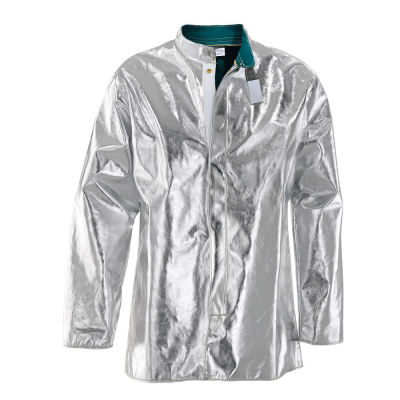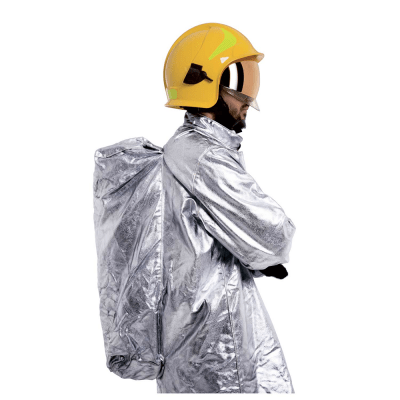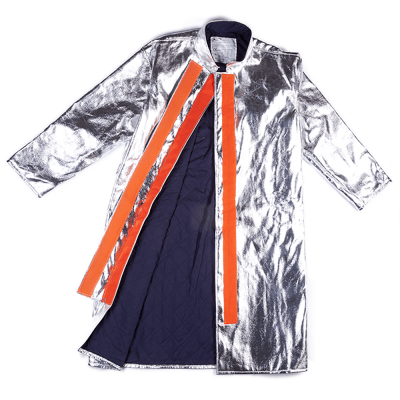Aluminized jackets
The EN ISO 11612 standard concerns all professions where one of the six risks tested may be present. It therefore applies to many trades such as trades in foundry, steel industry, metal industry, oil rigs, etc. Nevertheless, more suitable standards are mandatory for practicing the trades of welders and firefighters. These are the professions of fire brigade as well as welders for which standard EN ISO 11612 does not provide sufficient protection in relation to the risks incurred by these professions. Garments with this standard have this pictogram, printed on the garment:
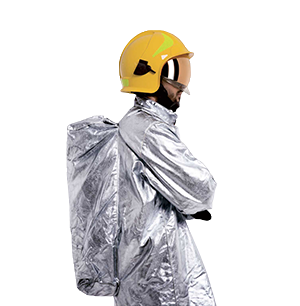
Products available
Quick delivery
Free delivery
From 400€ in France
Free quote 24h
Contact us!
Customer Service
+334 79 34 92 15
Mobile payment
Apple & Google Pay
PRODUCTS
LEARN MORE
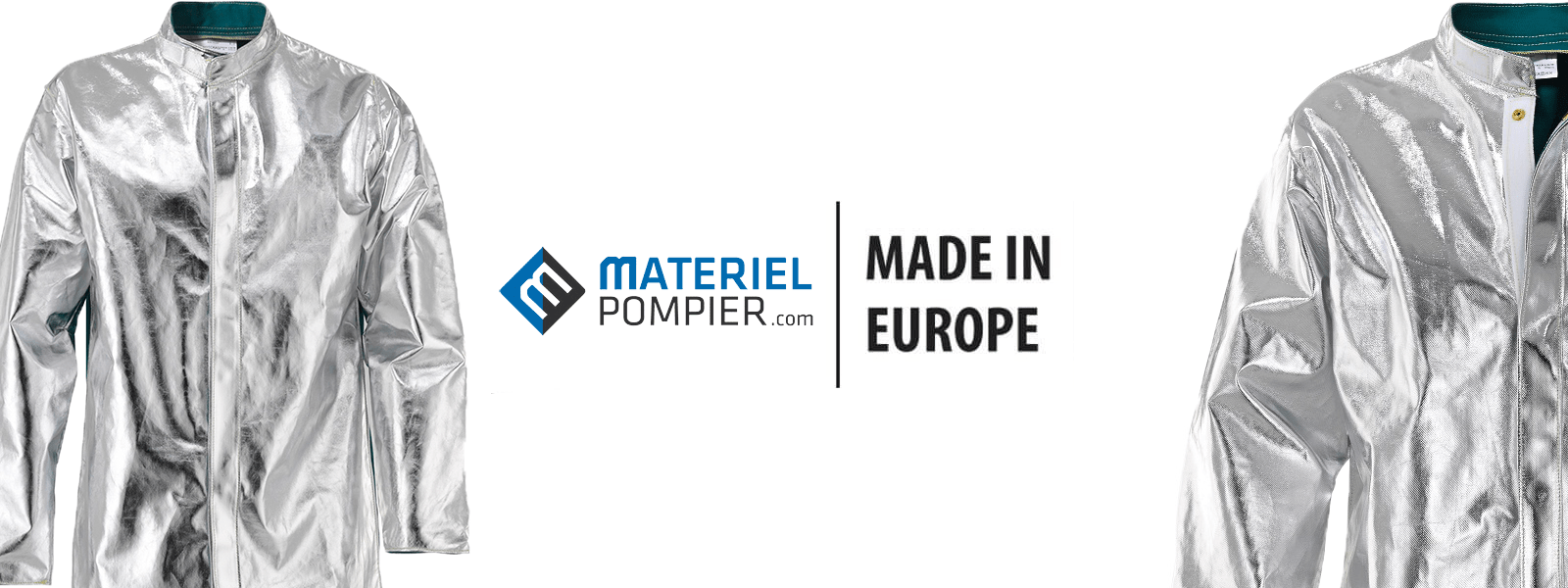
THE EN ISO 11612 STANDARD
The EN ISO 11612 standard concerns the resistance of a work clothes against heat and flames. It concerns work clothes only and not accessories apart from gaiters, shoe covers and balaclavas.
THE EN ISO 11612 STANDARD IN DETAILS
This standard defines test methods and performance level requirements for work clothing against heat and flame. The EN ISO 11612 standard provides for several test methods for the materials that make up the tested garment. Each of the tests corresponds to a resistance index noted A, B, C, D, E and F and which indicates a level of resistance on a scale specific to each index.
The test of flame spread, corresponding to the index A makes it possible to evaluate the time of ignition and formation of a hole on a garment. The results of this test must not exceed the values fixed by the standard. Two levels of protection can be defined on this test: A1 (horizontal conflagration) and A2 (lateral conflagration).
The test of resistance to convection heat determines the time of exposure of the garment to a flame, necessary for the part of the fabric opposite the flame to experience an increase in temperature of 24 ° C. Thus, three performance levels are possible:
B1 : exposure time between 4 and 10 seconds.
B2 : exposure time between 10 and 20 seconds.
B3 : exposure time of more than 20 seconds.
The test of radiant heat resistance consists in measuring the exposure time necessary before a tissue temperature increase of 24 ° C while it is exposed to a source of radiant heat. Four possible performance levels:
C1 : exposure time required between 7 and 20 seconds.
C2 : exposure time required between 20 and 50 seconds.
C3 : exposure time required between 50 and 95 seconds.
C4 : necessary exposure time of more than 95 seconds.
D and E are the two protection indices of the garment against molten metal projections. They both have 3 resistance levels that correspond to the weights of molten metals.
D for molten aluminum:
D1 : 100 to 200 grams.
D2 : 200 to 350 grams.
D3 : 350 grams and more.
E for molten iron:
E1 : 60 to 120 grams.
E2 : 120 to 200 grams.
E3 : 200 grams and more.
The last test concerns the contact heat resistance. The F index indicates the following performance levels:
F1 : Between 5 and 10 seconds.
F2 : Between 10 and 15 seconds.
F3 : 15 seconds and more.
To be EN ISO 11612 standardized, clothing must have minimum performance levels on the first index A and on at least one of the other indices specified by this standard, namely the indices from B to F. But other requirements are also specified. by this standard:
- Un overlap of at least 20 cm between Jacket and pants must be present in a standing position.
- No cuffs on the sleeves and trouser legs and the outer pockets must not have flaps wider than the pocket (only if the garment has any performance level on the D and / or E indices.
- Closures must have a protective flap, have a distance of 15 cm between the buttons and the necklines must have a closure.
- Finally, if a pair of pants has a side slit at the leg, it must be resealable and have a flap.

